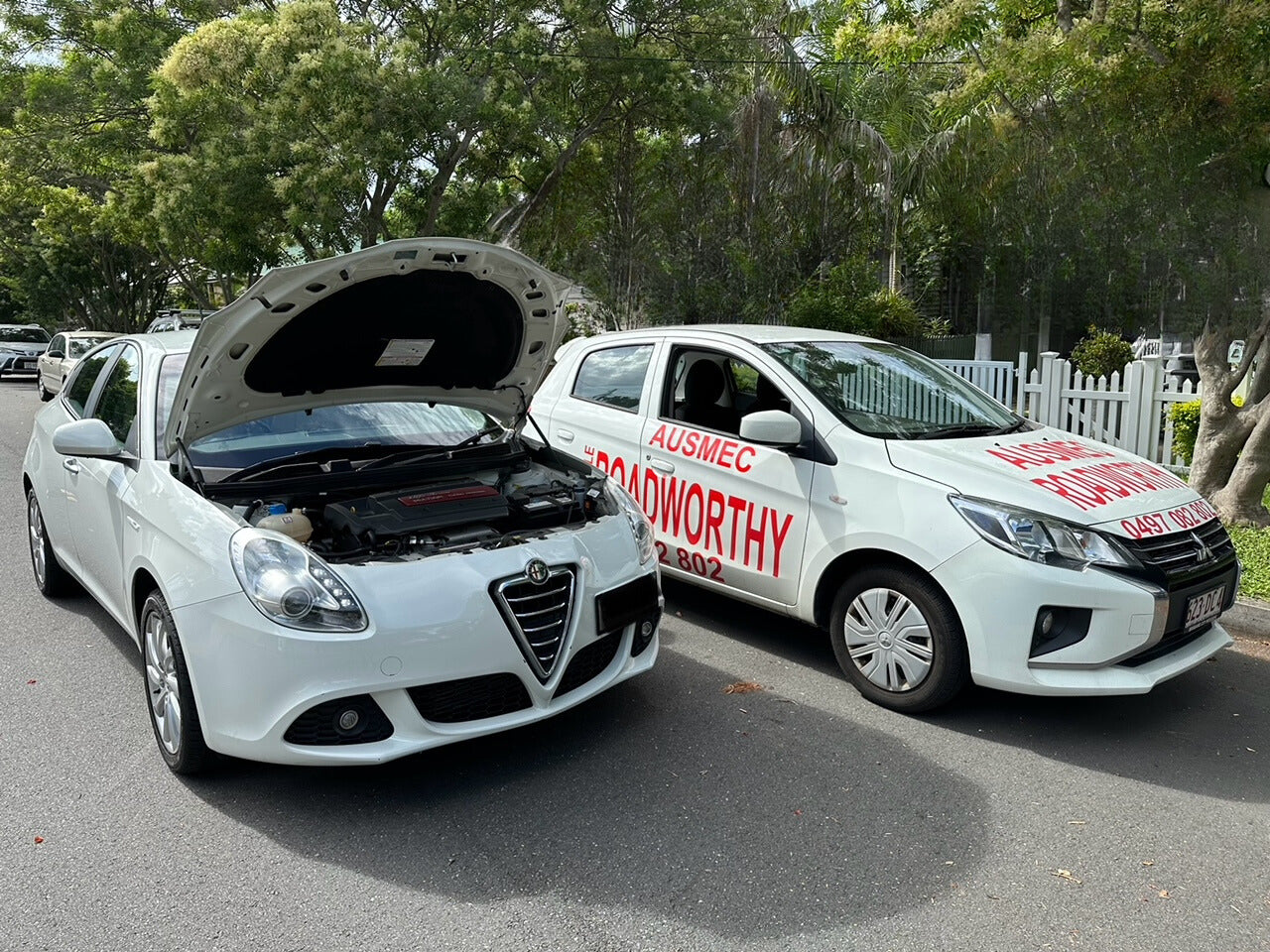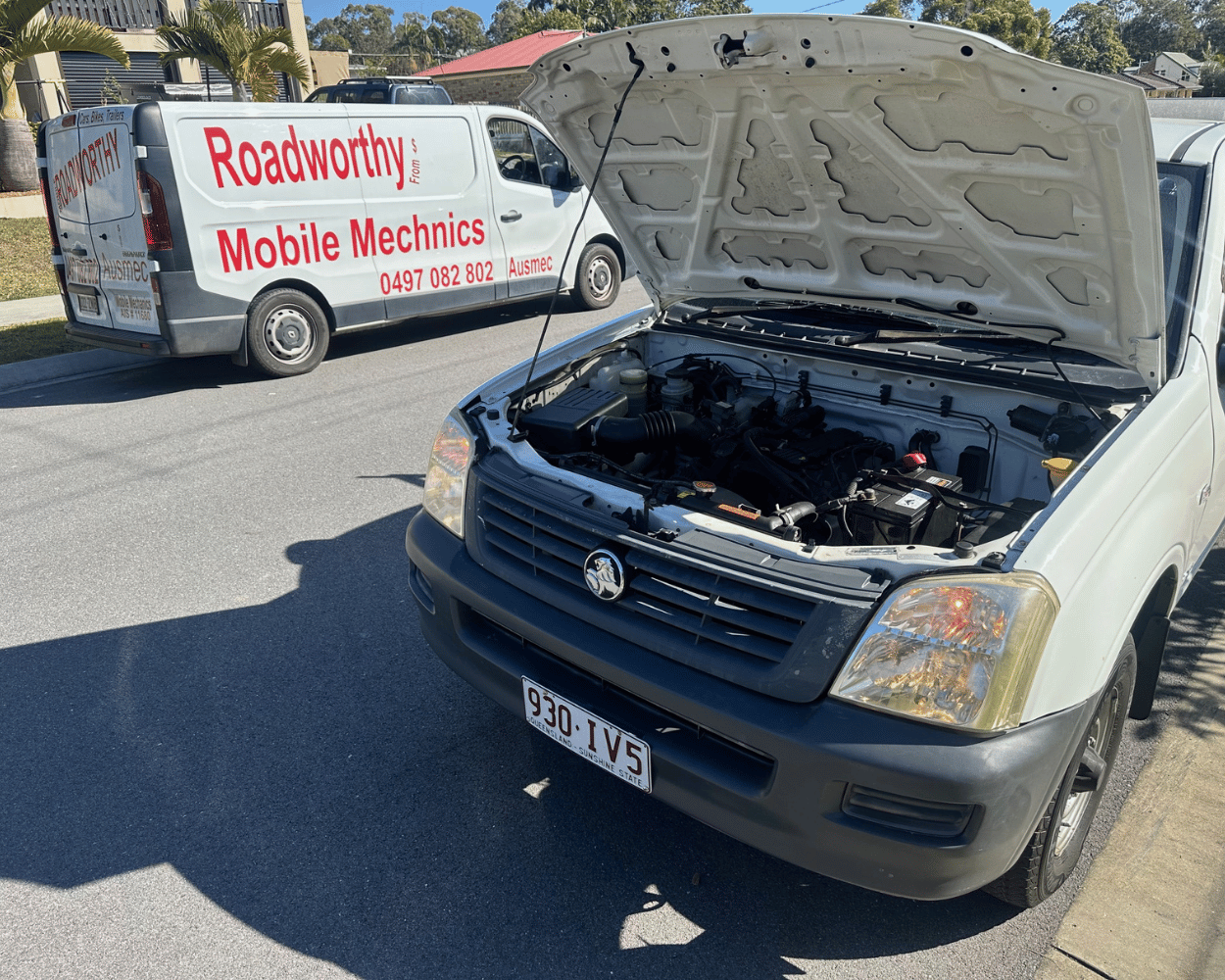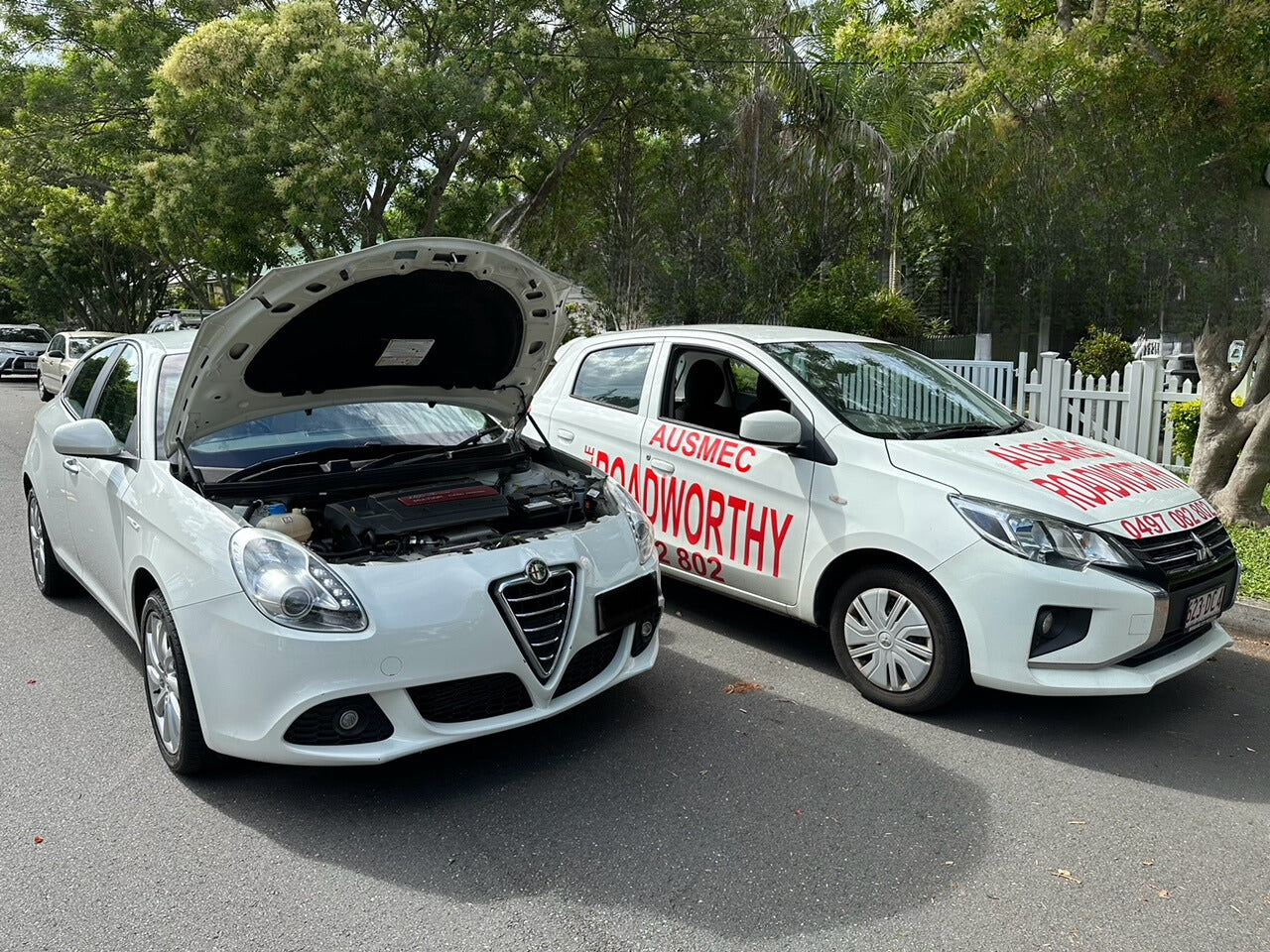General and Background
General and Background
What is a roadworthy Certificate in Queensland ?
In Queensland it's simply an official document confirming your vehicle meets the minimum safety standards set by the Queensland Department of Transport. These standards are outlined in the Queensland Light Vehicle Inspection Manual.
To ensure your vehicle meets Queensland roadworthiness standards, inspectors meticulously examine various components. Here's a breakdown of key areas:
- Seatbelts & Restraints: Functionality and condition of seatbelts, airbags (if applicable), and child restraint anchor points.
- Lamps & Electrical: Operation of headlights, taillights, brake lights, turn signals, horn, and overall electrical system integrity.
- Windscreens & Glazing: Clarity, security, and compliance of windscreens and windows.
- Body, Chassis & Frame: Absence of significant damage, corrosion, or structural issues.
- Tow Couplings (if applicable): Correct installation, functionality, and secure attachment of tow bars and towing components.
- Steering & Suspension: Smooth operation, absence of excessive play, and proper suspension function.
- Wheels & Tyres: Adequate tread depth, proper inflation pressure, and no cracks or damage to wheels.
- Brakes: Functionality, condition of discs/pads/drums, and sufficient brake fluid levels.
- Engine, Driveline & Emissions: No abnormal noises, leaks, secure engine/exhaust mounting, and adherence to emission standards.
- Vehicle Safety Features: Functioning of features like anti-lock braking systems (ABS) and airbags (if applicable).
- Identification: Verification of vehicle identification number (VIN) and compliance plates.
- Modifications: Assessment of any modifications to ensure they comply with regulations and don't compromise safety.
- Road Test: Evaluating handling, braking performance, and overall vehicle operation on the road.
For a comprehensive breakdown of each category and the latest 2024 guidelines set by the Department of Transport, refer to the links above.
Qualified Examiners: Ensuring Safety on Multiple Levels
A qualified examiner plays a crucial role in roadworthiness inspections. They possess the necessary qualifications and experience to interpret Department of Transport regulations. Their primary focus is threefold:
- Operator Safety: The examiner ensures the vehicle operates safely for the driver or rider.
- Public Safety: The inspection verifies the vehicle doesn't pose a risk to other road users or occupants.
- Environmental Impact: The examiner checks for compliance with emission standards to minimize environmental damage.
By considering these factors, qualified examiners ensure vehicles meet roadworthiness standards, contributing to a safer and more sustainable transportation system.
Extra information on some RWC rules :
Background, Seats and Restraints, Lamps lights and Electrical, Windscreen, Body chassis and frame, Tow Couplings, Steering and Suspension, Wheels and Tyres, Brakes, Engine driveline and emissions, Vehicle safety Features, Vehicle Identification, Modifications, Road Test, Motorcycle RWC Standards,
Contact form
Ausmec Mobile RWC & Mechanics
Mobile Roadworthy (Safety certificate)
Share




